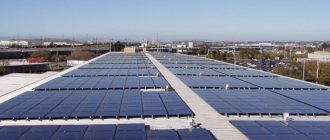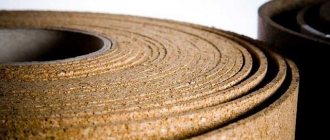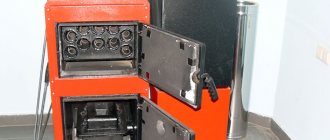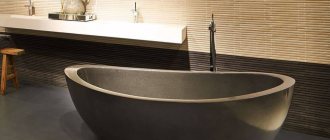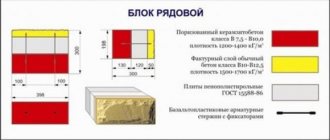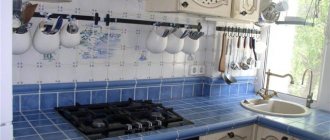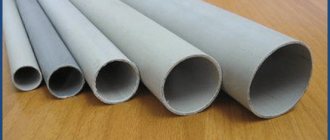Register Login
Publication date: May 3, 2019
The creation of the first samples of amorphous film batteries became a new discovery in the field of alternative sources of electrical energy. Over the course of several years, the model was improved, achieving outstanding technical and operational characteristics from a simple design. Experts involved in energy research say that very soon amorphous solar panels will take a leading position in their segment and will be put into mass production.
Description
At this time they are already represented by the third generation. The advantage of the second is considered to be low cost with power identical to crystalline modules. Therefore, they are the ones that have become widespread. Silicon required to produce them is 10 times less.
Models belonging to the third generation are characterized by an increased operating period and efficiency increased to 12%.
Important: photovoltaic modules, thin-film modules are considered the main candidate for mass production, possible in the near future, despite the shortcomings and the fact that today the leadership is held by crystalline analogues (80% of the market).
Comments:
Megavolt
I read that they released solar batteries in the shape of a round cone, they produce 20% more than conventional batteries. Does anyone know about this technology?
Electrician
Megavolt, let's calculate))) The efficiency of film batteries (namely, they are rolled into a cone) = 10%. We add 20% of 10% to them and get as much as 12% with an increase in cost of at least three times! Breakthrough in savings!
Semyon
Electrician, I also watched this story. It immediately seemed suspicious to me that the entire scientific breakthrough consisted of giving batteries some kind of shape. As if no one had guessed before that the sun was out of place... As always - conspiracy theories and collusion.
Leave a comment Cancel reply
Related Posts
Types of solar-powered garden lamps and lanterns, how and where to use them.
The principle of operation of solar panels.
How to choose a solar panel - overview of important parameters
Do solar panels for a private home pay off?
Generations of amorphous panels
Very soon, the rapid development of amorphous film modules may change the current market situation.
Today they are represented by three generations:
- The first category includes single-junction ones, the disadvantage of which was their short service life: after 10 years of operation they became unusable. In addition, their efficiency was extremely low - 5%;
- they are the same, but with twice the efficiency (8%) and a longer service life;
- third-generation devices can fully compete with analogues, since they have a fairly high efficiency - about 12%. They will last much longer than their predecessors.
In addition to them, there are combined options that form both crystalline and amorphous elements. However, their cost is high, so they are not widely used.
Vacuum method
In principle, any approach can be used, for example, ion sputtering, but all methods have their own difficulties, such as the formation of a film both on the substrate and on the inner surface of the chamber. Another difficulty is associated with the supply of indium, which is actively used for the manufacture of flat panel monitors.
Although panels of this type are actively developing, their demand is small and does not exceed 2%.
Films made using cadmium telluride have gained great popularity. Their efficiency is 16% (versus 18%). Amorphous silicon batteries are very popular. Their efficiency was increased to 10%.
Advantages
Thin-film amorphous panels have many advantages over their crystalline counterparts:
- better performance at high operating temperatures. Due to their lesser dependence on heat, they are more efficient than crystalline ones in warm weather. It is clear that they lose power when heated, but not as much as conventional solar panels, for which it can be reduced by 20%.
They are capable of generating electricity in low light conditions, therefore they are more effective in comparison with their crystalline counterparts in rainy weather, twilight and snowfall.
Amorphous systems continue to generate electricity when classical crystalline structures stop generating it. They produce 20% more of it than their analogues.
- allow hidden installation;
- cost less because production costs are low. The favorable cost of each Watt is also explained by the injection of significant investments, which makes it possible to increase their output and reduce the price;
- high flexibility and low thickness make installation, repair and maintenance easier;
- less dependent on shading and dirt on the front surface, while the performance of silicon devices is reduced by 25%;
- Minimum defects. The process of creating the modules in question is very simple. Due to the absence of the need for soldering to connect the modules to each other (they are formed immediately into a single structure), there are fewer defects in the finished products.
The disadvantages, as you can see, are more than offset by the advantages of the panels.
Myth 6: Excess electricity is stored in the system
Fact: This is true, but the amount of accumulated electricity is limited by the depth of charge of the batteries. In practice, connecting an alternative energy system to power grids in Russia and Ukraine is practically impossible. In Europe and the USA, energy generation into the grid is common. If the system is connected to the electrical grid, you can feed excess energy into the local power grid, charging bonuses to your account. If you need a large amount of electricity at night (when the system is not working), you can use electricity from the network completely free of charge. This is done automatically, so users don't even notice the switch. We hope that soon we will also simplify the procedure for connecting to networks.
Disadvantages of amorphous modules
The main negative feature of amorphous silicon solar cells is considered to be low efficiency, which is half that of silicon analogues (under conditions close to ideal).
In addition, they have other disadvantages:
- significantly larger dimensions than analogues;
- protected on both sides by glass, they acquire a significant final mass. The disadvantage, by the way, is gradually leveled out thanks to the development of technology.
Silicon panels have no less disadvantages.
Myth 9: Why invest in solar energy if you have coal?
Fact: Using solar energy is an environmentally friendly form of alternative energy. Coal is one of the dirtiest fossil fuels, and coal mining poses a number of health problems for mine workers. Due to the undermining of rock and the formation of waste heaps, the ecology is disrupted. The more coal we burn, the more harm we cause to the environment. Burning coal increases mercury and smog levels and further increases carbon dioxide emissions, leading to devastating environmental consequences.
Myth 10: Solar panels are harmful to the environment after their useful life Fact: Solar panels have a useful life of 35 years, after which they become ineffective and can be recycled. Some manufacturers accept modules for recycling free of charge.
Disadvantages of Silicon Devices
This material is very expensive, since for the required degree of purification it needs to go through several stages of purification. When cutting it, a large amount turns into waste - chips.
In addition, not all energy is converted into electrical energy under the influence of light: it is partially reflected back from the surface, the other part, without being absorbed or converted, passes “outside”.
We recommend:
- Solar panels work at night and in cloudy weather
- Monocrystalline solar panels: comparison with analogues, advantages, price - TOP-6
- Thin-film solar cells: advantages and disadvantages, price, characteristics
In addition, it can lead to thermal vibrations in the crystal lattice and is wasted on the recombination process, i.e. destruction of electrons with “holes”, which is accompanied by the release of heat.
All this negatively affects the efficiency of solar cells, reducing it to 15% (in rare cases to 22%).
Review of solar panels for tourists
Since alternative solar energy sources are becoming more and more popular every year, the range of these products is so wide that it is simply impossible to understand which solar panels are best to take for a hike without tips from other people. To make solving the “puzzle” easier, it is better to give examples of effective equipment. This review of solar panels for tourists will help future buyers either get their bearings or find “their” model.
Goal Zero Nomad 7
This is one of the most popular models on the world market. Nomad 7 from Goal Zero is equipped with a 7 W monocrystalline panel, it is completely sealed, so it is not afraid of rain, snow, or falling into a river. In addition to the USB port (1 A, 5 V, 7 W), the device has a connector for batteries (1.1 A, 6.5 V, 7 W) and a connector that makes it possible to connect another similar device. The battery is quite compact even when unfolded (38x229x432 mm), so it can be used in tight spaces.
Goal Zero Adventure Kit
A folding model from the same manufacturer is suitable for charging all existing gadgets. The device has several outputs: USB, 5 and 12 V. The power of the drive is 7 W, the operating voltage is 12 V, the current at the USB connector is 600-700 mA. At the bottom of the device there is an indicator light that can work without charging for 20 hours. The dimensions of the device when closed are 25x150x230 mm, its weight is 362 g. The entire set charges in 4-5 hours.
SOLAR
This multifunctional mobile device is made in China and can be used in any adverse conditions: at temperatures from -40° to +50°. This device has serious power (about 10 W), the charging current is 800 mA. Dimensions of the device - 4.5x224x450 mm, weight - 1 kg. This solar battery is universal, it is suitable for charging any equipment: mobile phones, laptop computers, etc. Disadvantages - high price, weight, lack of an additional adapter.
SCN-4/6
Another “celestial” representative is an amorphous silicon device from the Sun-Charge company. Its special feature is a small battery. The device has a power of 3.9 W, reasonable weight (290 g) and a very impressive design. Battery dimensions - 10x195x200 mm. The disadvantage is the lack of reliable protection from mechanical influences, so this solar battery requires careful handling.
SOLARMONKEY ADVENTURER
This compact device is manufactured by PowerTraveller. The device is also used to charge gadgets via a USB port; there is an adapter for Apple: the model has a buffer battery with a capacity of 2500 mAh, which is fully charged in 9 hours. The design uses polysilicone elements, their efficiency is 17%. The dimensions of this solar battery are 22.75x96x170 mm, the weight of the device is 265 g.
AcmePower AP-MF1918
This is another universal battery, ideal for charging any electronics - phones, players, navigators, etc. The model can act as a lighting device. The battery capacity is 1000 mAh, charging current is 800 mA, operating voltage is 5-6 V. It will take about 10 hours to fully charge the solar battery. The device has short circuit protection. Its weight is 77 g, dimensions are 16x57x123 mm. The kit includes 5 adapters.
SZU2-BSA-7.5
This is a Russian model that has deservedly won its place on this list. This universal charger is capable of charging both portable and mobile equipment and lead batteries. The folding design has an enviable power (14W) and a fairly large weight - 1.1 kg, and can operate at different temperatures: from -30 to +40°. Its dimensions when unfolded are 3x230x1640 mm.
Fuse
This solar battery from Voltaic Systems is designed to be mounted on a backpack. Charging time from sunlight is 7 hours, 5.5 hours from other sources (external battery, network). Current strength is 1A, voltage is 5.5 V, power is 6 W, weight is 600 g. The battery is quite compact: its dimensions are 20x210x280 mm.
Area of use
It is recommended to use this type of solar modules for:
- high cloudiness;
- hot weather, when the modules heat up to 60 degrees;
- no restrictions on the area of the structure and its weight;
- if necessary, integration directly into the building.
In addition, amorphous solar panels can be installed in window openings (instead of glass) and mounted on building facades, which opens up unlimited possibilities for designers. But, the elements must differ in a certain degree of transparency (for glass it is 5-20%, without losing a percentage of electricity generation).
From flat to cylindrical
Cylindrical solar panels were first developed by a small American company with the catchy name Solyndra (from the words “solar” and “cylinder”). They presented their achievement in 2008 and immediately received several large orders from European and American companies. According to them, this figure was more than $1 billion.
Until 2008, solar cells were flat in shape. Solyndra proposed installing cylinder elements in solar panels. A thin layer of photocell is applied to the surface of a glass tube, after which it is placed in another similar tube, but with electrical contacts. The already familiar copper, gallium, selenium and indium are used as semiconductors for elements. Cylindrical solar panels, due to their shape, absorb more light and, as a result, have a higher performance indicator. Each panel consists of 40 cylinders and measures 1 by 2 meters.
To increase the absorbed light, it is recommended to use cylindrical batteries in combination with a white roof covering. In this case, the rays reflected from the roof will pass through the cylinders, which will provide another plus 20% of the absorbed energy
Another important advantage of batteries with cylindrical elements is their resistance to strong winds. They can withstand wind gusts of up to 200 km/h
This makes installation of solar panels easier and cheaper.
Manufacturing
Only thoroughly purified silicon is suitable for the manufacture of a semiconductor converter. Its shape, as a rule, is a cylinder with a diameter of only tens of millimeters.
It is cut into the thinnest disks, microns in thickness, which are then alloyed, applying metal and other impurities to the surface.
In a silicon wafer, areas are formed that are saturated differently with “holes” and electrons. In other words, having “hole” p-conductivity and n-electronic conductivity.
By “holes” we mean a metal from which electrons have been partially removed by impurities, i.e. this is the “positive” zone, or p-conductivity.
By combining the composition, the order of the applied layers and their thickness, hetero- or pn-junctions are obtained, i.e. The plates have the ability to produce electricity when irradiated with light.
Based on this principle, the first FETs were created - photoelectric converters, the efficiency of which reached almost 30% under normal conditions and about 22% at high temperatures.
Average prices
The cost of solar panels is one of the criteria for their selection.
The retail price for the models discussed above, produced by Chinese and sold through specialized organizations, is:
- Solar battery 60P – 3400.00 rubles;
- Solar battery 100P – 4980.00 rubles;
- Solar battery TopRaySolar TPS-FLEX-50W (50.0 W) – 6790.00 rubles;
- Solar battery TopRaySolar TPS-FLEX-80W (80.0 W) – 10,410.00 rubles;
- Solar battery TopRaySolar TPS-FLEX-100W (100.0 W) – 12,440.00 rubles;
- Solar battery TopRaySolar 100M (100.0 W) – 5210.00 rubles;
- Solar battery TopRaySolar TPS-FLEX-100W (100.0 W) – 12,440.00 rubles.
The cost of devices from other manufacturers with similar technical parameters lies in the same price range, so there is always the opportunity to make your own choice, in accordance with individual wishes.
Production of amorphous FEP
The raw material for the main layer is silane-silicon hydrogen (SiH4). After treating silicon with hydrogen, hydrogenated silicon is obtained.
In a closed chamber, the silane is exposed to a glowing electrical discharge before being applied to amorphous silicon. Evaporating, silicon vapors are deposited on the substrate. The layer is micron thick.
Since the production is waste-free, the cost of the finished product is low. Modules can be made with an area of several square meters.
Hydrogenation achieves semiconductor properties in the thinnest films.

